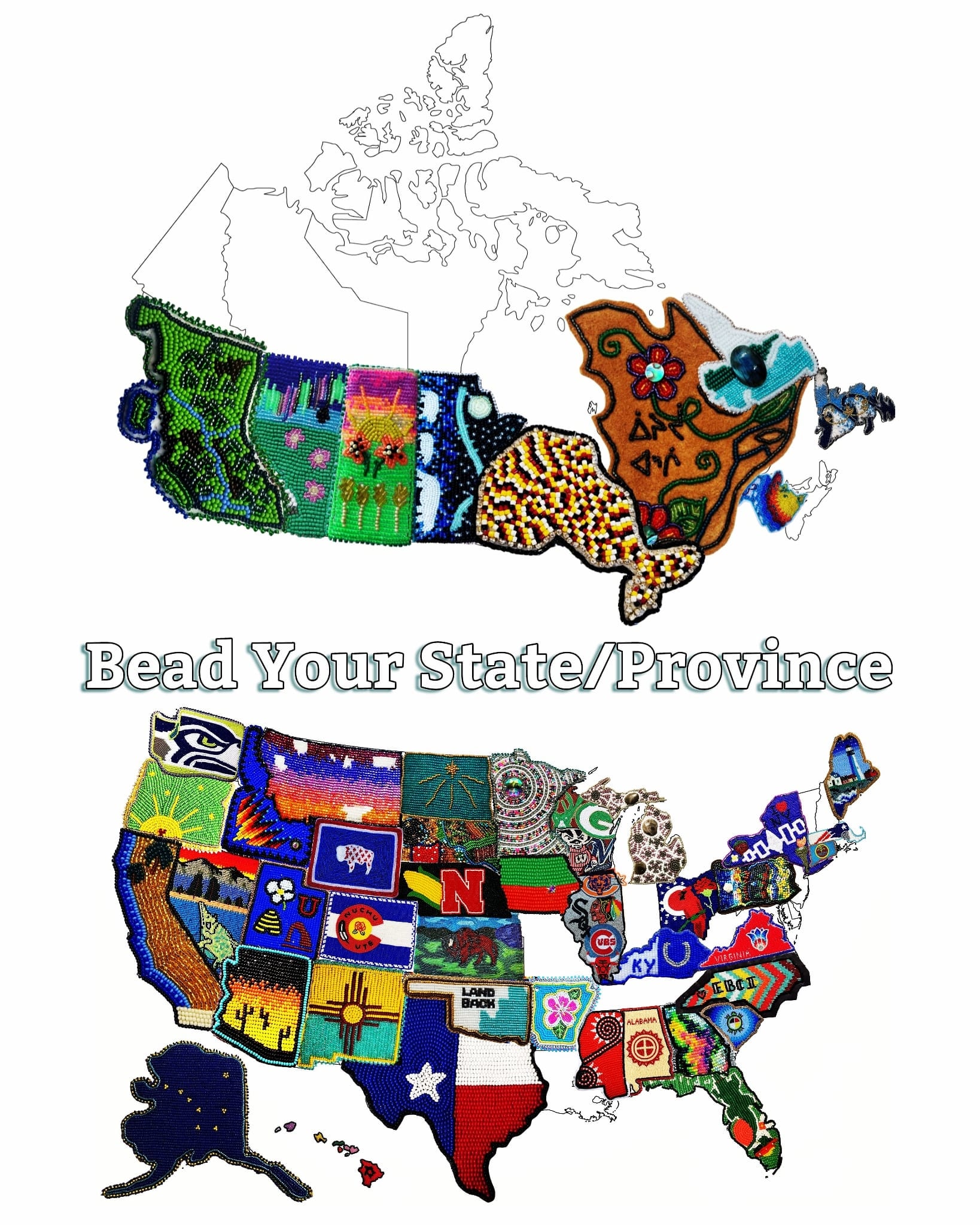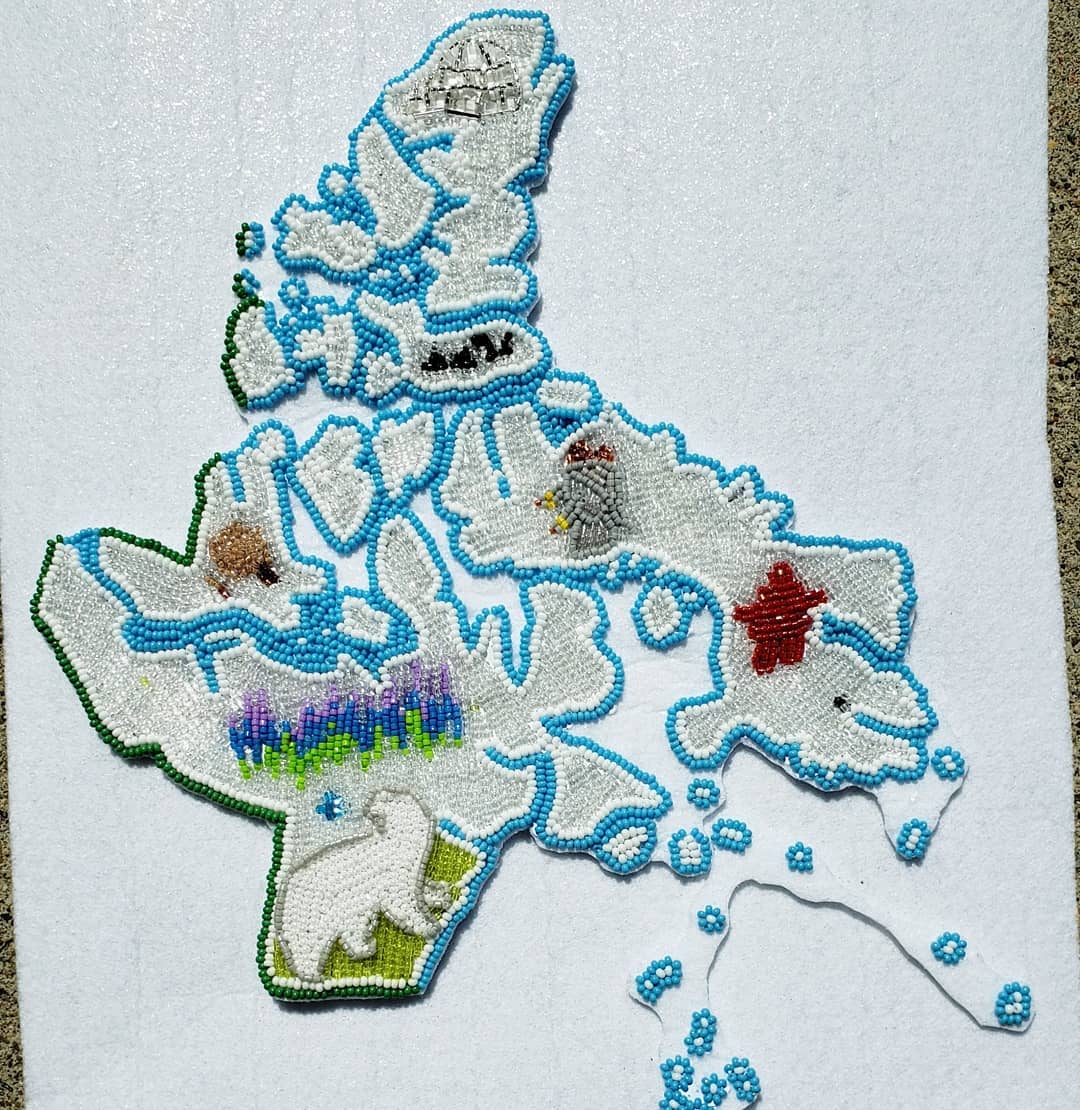
North American beaded map mosaic project bringing nations together during pandemic
When the COVID-19 pandemic swept the country in March, Alaskan resident, CeeJay Johnson, owner of Kooteen Creations decided to engage Indigenous communities with a large scale art project.
The envisioned project was a map of the United States in a mosaic form with beaded patches representing each individual state.
The idea gained such popularity and interest on social media, Canada was added to the beaded map mosaic project. Johnson is Tlingit from Sitka, Alaska. The 33-year-old is also Dakota from the Fort Peck Tribe in Montana. She told meadowlakeNOW the project began in April as a way to engage people from home and offer a sense of community while isolated. The project rapidly expanded where Johnson received interest from Mexico, Canada and Europe.
“I wanted to give [people] a sense of doing something in the way of a community project,” she said. “I didn’t think it would be this awesome.”




